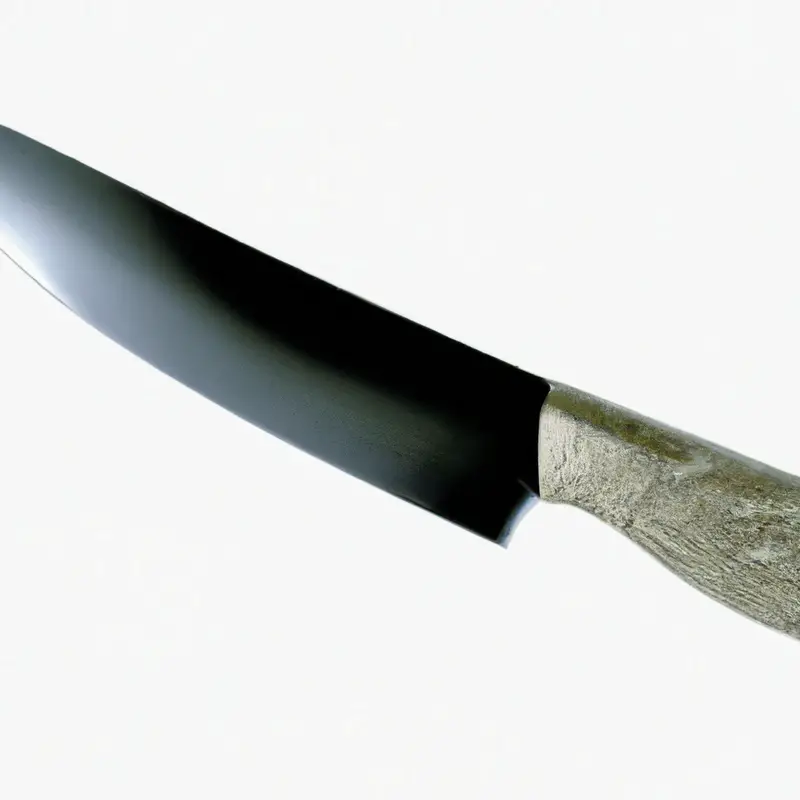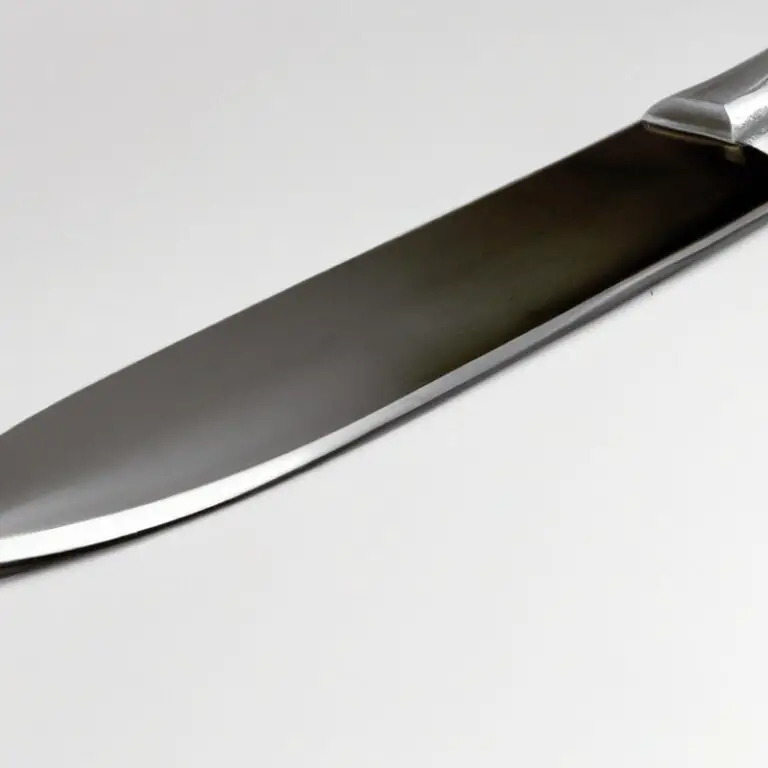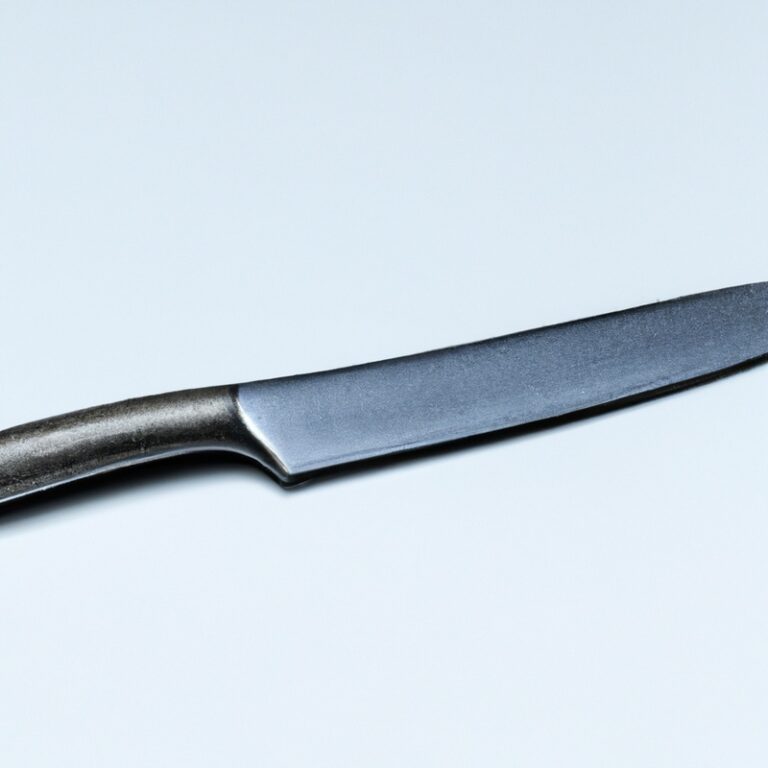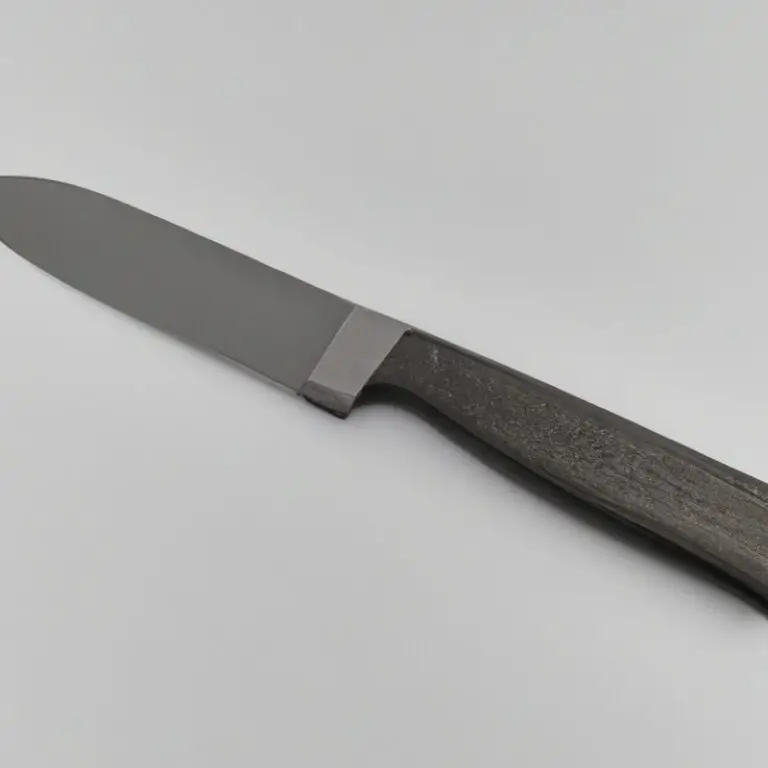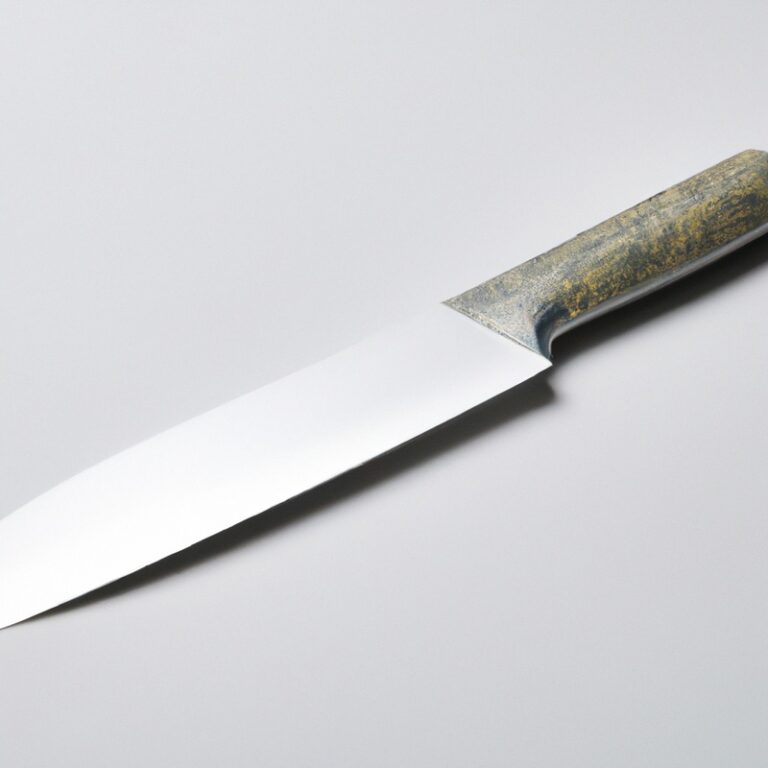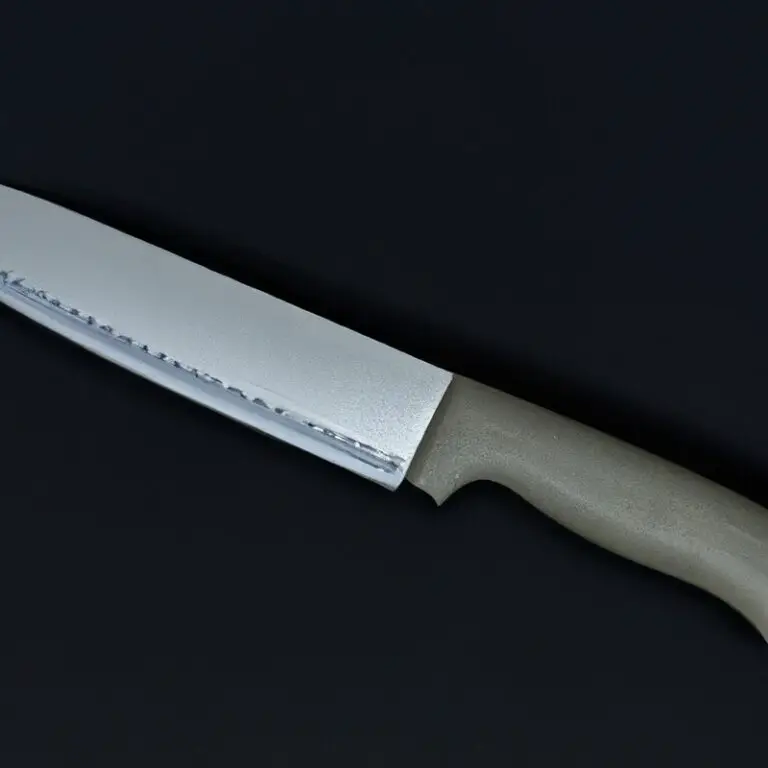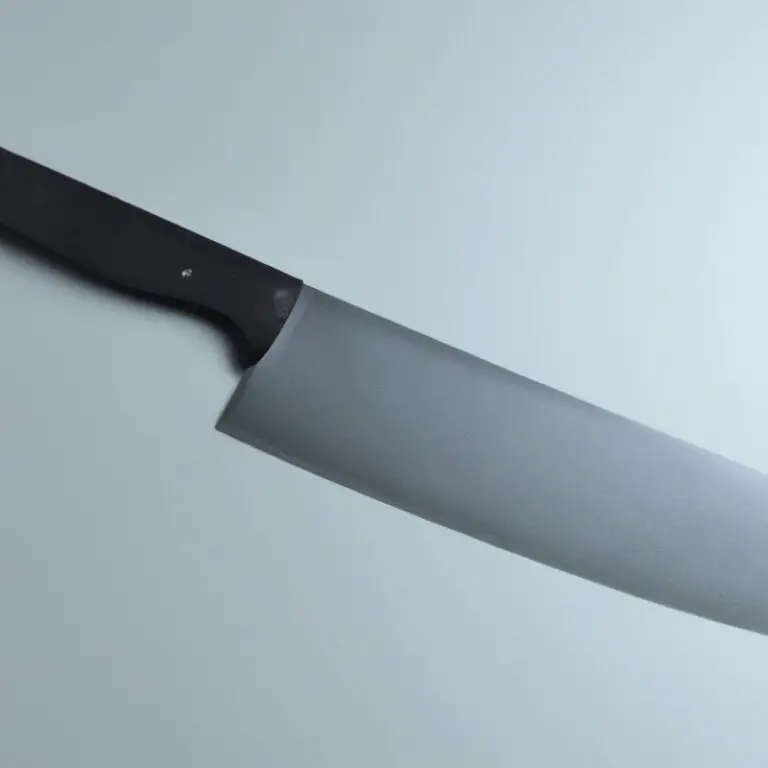How To Sanitize And Remove Odors From a Cutting Board Used With Gyuto Knives? Tips
Key Takeaways:
- Sanitize your cutting board by using a solution of 1 tablespoon of bleach per gallon of water.
- Remove odors by rubbing the board with a cut lemon and letting it sit for 15 minutes before wiping clean.
- Keep your cutting board in top condition by oiling it regularly with food-safe mineral oil.
- Use a Gyuto knife with care, as its thin blade requires precision and a sharp edge to avoid damaging both the knife and the board.
As a cooking enthusiast, there’s nothing quite as satisfying as creating a delicious meal from scratch, but what happens when your cutting board develops an unpleasant odor? Not only is it unappetizing, but it can be a breeding ground for harmful bacteria.
That’s where proper sanitization comes in.
In this article, we’ll explore different cleaning methods to help remove unwanted odors and bacteria from your cutting board – specifically, one that’s used with Gyuto knives. We’ll discuss natural remedies, cleaning solutions, dos and don’ts of disinfecting, and useful tips for maintaining the quality of your board.
| Method | Steps | Pros | Cons |
|---|---|---|---|
| Hydrogen peroxide solution | 1. Mix 1 tablespoon of hydrogen peroxide and 1 cup of water. 2. Soak the cutting board for 5 minutes. 3. Rinse thoroughly with water. | – Effectively removes odors and stains. – Affordable and easy to find. | – May cause discoloration of the cutting board. – May dry out the wood. |
| Vinegar solution | 1. Mix 1 part vinegar and 4 parts water. 2. Soak the cutting board for 5-10 minutes. 3. Rinse thoroughly with water. | – Effective in removing odors. – Safe for food contact surfaces. – Affordable and easy to find. | – May cause discoloration of the cutting board. – May leave a vinegar smell on the board if not rinsed thoroughly. |
| Lemon and salt scrub | 1. Cut a lemon in half. 2. Sprinkle coarse salt over the board. 3. Scrub the board with the lemon and salt mixture. 4. Rinse thoroughly with water. | – Natural and safe for food contact surfaces. – Leaves a fresh lemon scent. – Can help remove stains. | – May not be as effective in removing strong odors. – May scratch the surface of the cutting board if used too aggressively. |
| Baking soda paste | 1. Mix baking soda and water to make a paste. 2. Apply the paste to the cutting board. 3. Let it sit for a few minutes. 4. Scrub the board with a brush or sponge. 5. Rinse thoroughly with water. | – Natural and safe for food contact surfaces. – Effectively removes odors and stains. – Can help disinfect the board. | – May leave a residue if not rinsed thoroughly. – May cause discoloration of the cutting board if left on for too long. |
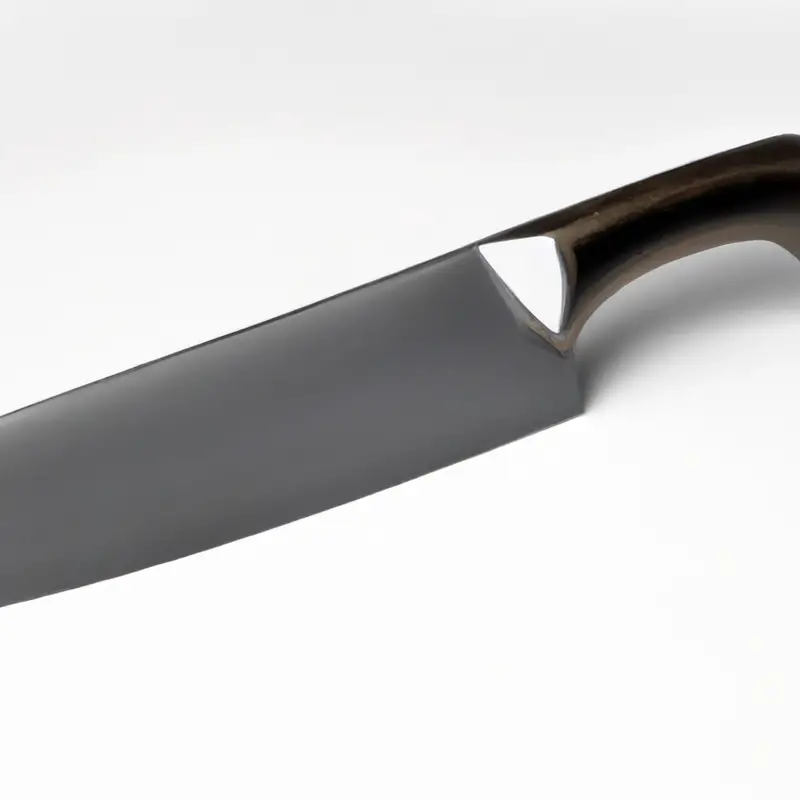
Understanding the importance of properly sanitizing your cutting board
Properly sanitizing your cutting board is crucial to avoid the spread of harmful bacteria. Cutting boards can harbor pathogens such as E.
coli, salmonella, and listeria that can cause foodborne illness.
The importance of sanitizing your cutting board extends to all types of cutting boards, including plastic, wood, and bamboo. Sanitizing your cutting board not only ensures that your food is safe to eat but also prolongs the lifespan of your cutting board by preventing odors and stains.
Regularly sanitizing your cutting board can also prevent cross-contamination between different types of food.
Different materials require different sanitizing methods, so it is essential to choose the correct cleaning solution and technique based on the material of your cutting board.
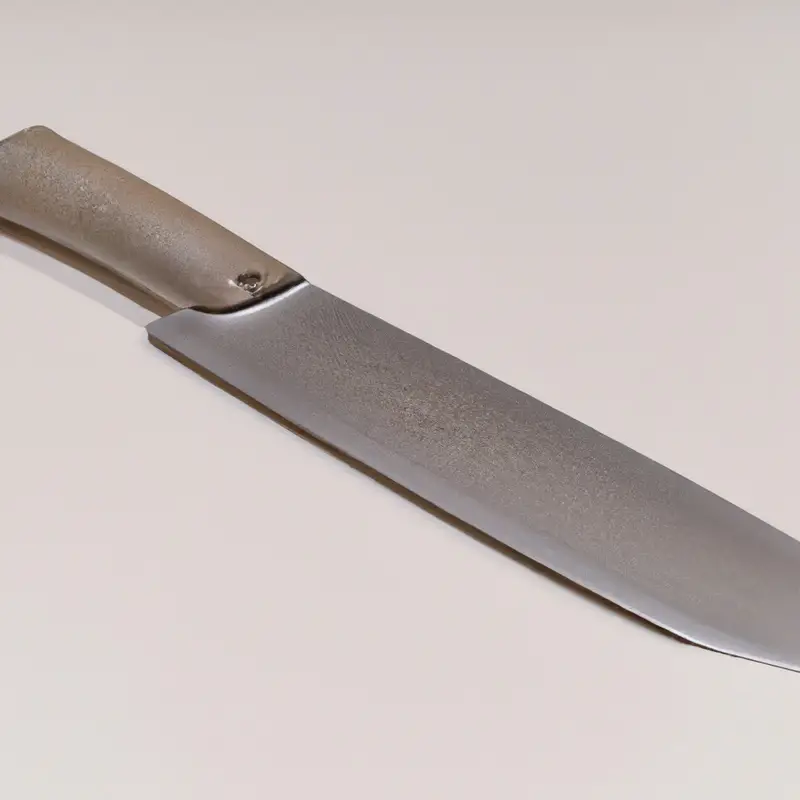
Different types of cutting boards and their sanitization requirements
Different types of cutting boards have different sanitization requirements. Here are some examples:
- Plastic Cutting Boards: They are dishwasher safe, and thus, easy to sanitize. They should be replaced once they become too scratched or warped.
- Wooden Cutting Boards: They require special care as they are porous and can absorb moisture, leading to bacteria buildup. A solution of 1 tablespoon of bleach mixed with 1 gallon of water can be used to sanitize wooden cutting boards.
- Bamboo Cutting Boards: They are harder than wood, but also more porous. Like wooden cutting boards, bamboo boards should not be soaked and need to be dried thoroughly after washing.
- Glass Cutting Boards: They are non-porous and easy to clean but can dull knives quickly and increase the risk of chipping.
- Marble Cutting Boards: They are hard and non-porous, making them easy to sanitize. However, they are prone to scratches.
It is essential to use the appropriate cleaning solution and method based on the material of your cutting board. For example, bleach can be too harsh for wooden boards and should only be used sparingly.
Additionally, it is important to replace your cutting boards periodically to prevent the buildup of bacteria.
Identifying the source of the odors on your cutting board
Identifying the source of odors on your cutting board is crucial to properly sanitize and remove them. Common sources of odor on cutting boards include bacteria, spices, oils, and juices from raw meat, fish, and poultry.
These substances seep into the grooves and pores of the board and create an ideal environment for microbial growth.
To identify the source of odor on your cutting board, use your sense of smell and sight. If the board smells like onions or garlic, it may be due to the spices used during cutting.
If it smells like raw meat, fish, or poultry, it may be due to juices leftover from cutting.
Check for stains and discoloration on the board as well, which can indicate bacterial growth and contamination. By identifying the source of odor on your cutting board, you can choose the appropriate cleaning solution and technique to effectively sanitize it and eliminate the odor.
Using natural remedies like vinegar and lemon to sanitize and deodorize your cutting board
Using natural remedies like vinegar and lemon can effectively sanitize and deodorize your cutting board. White vinegar is a powerful natural disinfectant that can kill bacteria and viruses.
Mix equal parts of white vinegar and water, then spray the solution on your cutting board and let it sit for a few minutes before rinsing it with water.
Lemon juice contains citric acid, which can also kill bacteria and remove odor. Simply rub a lemon wedge on your cutting board, let it sit for a few minutes, and rinse it with water.
You can also mix lemon juice with salt to form a scrub and use it to remove stains and sanitize your board.
Remember to dry your cutting board completely to avoid warping or cracking. Using these natural remedies is an affordable and eco-friendly way to keep your cutting board clean and safe to use.
Choosing the correct cleaning solution and techniques based on the material of your cutting board
Choosing the right cleaning solution and technique for your cutting board depends on the type of material used. For wooden cutting boards, avoid using harsh chemicals as they can damage the wood and leave toxic residue.
Instead, use a mixture of one part vinegar and four parts water to sanitize your board.
You can also use lemon and salt to remove odors. Make sure to dry the board completely after cleaning.
Plastic cutting boards can withstand harsher chemicals, but bleach should still be avoided as it can damage the plastic.
Use a solution of hot water and dish soap to clean your plastic cutting board, and rinse it thoroughly with hot water afterwards. For glass cutting boards, you can use the same solution as plastic cutting boards.
However, glass is less porous, making it easier to clean and sanitize than other materials.
Regardless of the type of cutting board you have, avoid putting it in the dishwasher as high temperatures can damage it. Instead, hand wash it with a soft sponge or cloth and let it air dry completely.
Disinfecting your cutting board with bleach and water mixture – the dos and don’ts
Dos and Don’ts for Disinfecting Your Cutting Board with Bleach and Water Mixture: DO:
- Use a mixture of one tablespoon of bleach and one gallon of water
- Let the solution sit on the cutting board for at least five minutes before rinsing
- Rinse the cutting board thoroughly with water
- Air dry the cutting board completely before using it again
DON’T:
- Use undiluted bleach
- Use bleach on wooden cutting boards as it can damage the surface
- Mix bleach with ammonia or any other cleaning solution
- Use a scrub brush or abrasive pad on the surface of a plastic cutting board as it can create grooves where bacteria can grow
It is essential to follow these dos and don’ts to ensure that your cutting board is thoroughly disinfected without causing any damage to its surface. Remember to always prioritize safety by wearing gloves and avoiding contact with bleach solution to your skin, eyes, or clothing.
Maintaining a clean and odor-free cutting board with regular washing and proper storage techniques
Maintaining a clean and odor-free cutting board is crucial to prevent the growth and spread of harmful bacteria. To achieve this, regular washing and proper storage techniques must be observed.
When washing your cutting board, use hot soapy water and rinse it thoroughly.
Dry it completely before storing it to prevent moisture buildup. For wooden cutting boards, avoid soaking them in water as it can cause warping or cracking.
Instead, wipe them with a damp cloth and clean the surface with a solution of vinegar and water.
For plastic cutting boards, they can be sanitized with a solution of bleach and water. Use a mixture of one tablespoon of bleach to one gallon of water and soak the board for a few minutes before rinsing and drying.
To preserve the quality of your cutting board, avoid cutting cooked and raw foods on the same surface and clean it after every use.
A well-maintained cutting board can last for years, providing you with a reliable and safe kitchen tool.
The role of Gyuto knives in cutting board sanitation and deodorization
Gyuto knives play a crucial role in cutting board sanitation and deodorization. The sharpness of these Japanese knives allows for precise and clean cuts, reducing the risk of cross-contamination between ingredients.
When a cutting board has been used with Gyuto knives, it’s important to follow proper sanitation techniques to maintain the knife’s sharpness and prolong its lifespan.
Regular cleaning can also help prevent odors from being absorbed into the cutting board, keeping it fresh and free of unpleasant smells. Using a mild detergent and warm water while gently scrubbing the surface of the cutting board is an effective way to sanitize and deodorize it.
Additionally, incorporating natural remedies like vinegar and lemon can further improve the cleaning process.
Overall, using Gyuto knives in conjunction with proper cutting board sanitation can lead to a safer and more efficient kitchen experience.
Alternative products for sanitizing and removing odors from a cutting board
Apart from natural remedies like vinegar and lemon, there are other alternative products for sanitizing and removing odors from cutting boards. These products include hydrogen peroxide, baking soda, tea tree oil, and rubbing alcohol.
Hydrogen peroxide is a highly effective sanitizer that can kill bacteria and deodorize the surface of your cutting board.
Mix equal parts of hydrogen peroxide and water, then use a cloth or sponge to apply the solution to your cutting board. Let it sit for a few minutes before rinsing it off with water.
Baking soda works best for removing stubborn odors caused by food and liquid spills on the cutting board surface.
Mix baking soda and water to form a paste, apply it to the affected area, and let it sit for about 10 minutes before scrubbing it off with a brush. Rinse it off with water and dry it thoroughly.
Tea tree oil has antibacterial and antifungal properties that make it an excellent alternative for sanitizing and removing odors from cutting boards.
Mix a teaspoon of tea tree oil with a cup of water and apply it to your cutting board using a spray bottle. Rubbing alcohol is another effective sanitizer that can kill bacteria and germs on the surface of your cutting board.
Mix equal parts of rubbing alcohol and water, then use a cloth or sponge to apply the solution to your cutting board.
Let it sit for a few minutes before rinsing it off with water. It is essential to note that some of these alternative products may be too harsh for certain cutting board materials.
Therefore, it is essential to carefully read the label and specifications of the cutting board to ensure you are using the right product and technique for sanitization and odor removal.
Tips for prolonging the lifespan of your cutting board and maintaining its quality
Tips for prolonging the lifespan of your cutting board and maintaining its quality:
- Use separate cutting boards for different food items to avoid cross-contamination.
- Clean your cutting board immediately after use with warm water and soap.
- Regularly sanitize your cutting board with natural remedies like vinegar and lemon or a bleach solution.
- Make sure to rinse and dry your cutting board completely after every use.
- Use a high-quality cutting board made of materials like wood, bamboo, or plastic that are durable and easy to maintain.
- Avoid exposing your cutting board to extreme temperature changes or moisture.
- Treat your cutting board with oil or beeswax regularly to keep it moisturized and prevent it from drying out or cracking.
- Store your cutting board in a dry and well-ventilated area to prevent it from developing mold or bacteria.
- Replace your cutting board if it becomes excessively scratched, warped, or shows signs of wear and tear.
- Avoid the use of harsh chemicals or abrasive materials that can damage your cutting board.
Final Verdict
Proper sanitation and deodorization techniques for cutting boards are essential for maintaining a hygienic and healthy kitchen environment. With the use of Gyuto knives, it becomes even more crucial to take proper care of your cutting board.
Remember to choose the appropriate cleaning solution and technique based on the material of your board.
Using natural remedies like vinegar and lemon can also help in sanitizing and deodorizing your cutting board. Bleach and water mixture can provide effective disinfecting results, but it must be used with caution.
Regular washing and proper storage techniques can help in maintaining a clean and odor-free cutting board.
Don’t forget to choose high-quality cutting boards and knives to prolong their lifespan and ensure their quality. By following these practical tips and hacks, you can keep your cutting board clean, odorless, and safe for cooking.
Trust the effectiveness of these techniques and put them to work in your kitchen to continue enjoying delicious and healthy meals every day!

